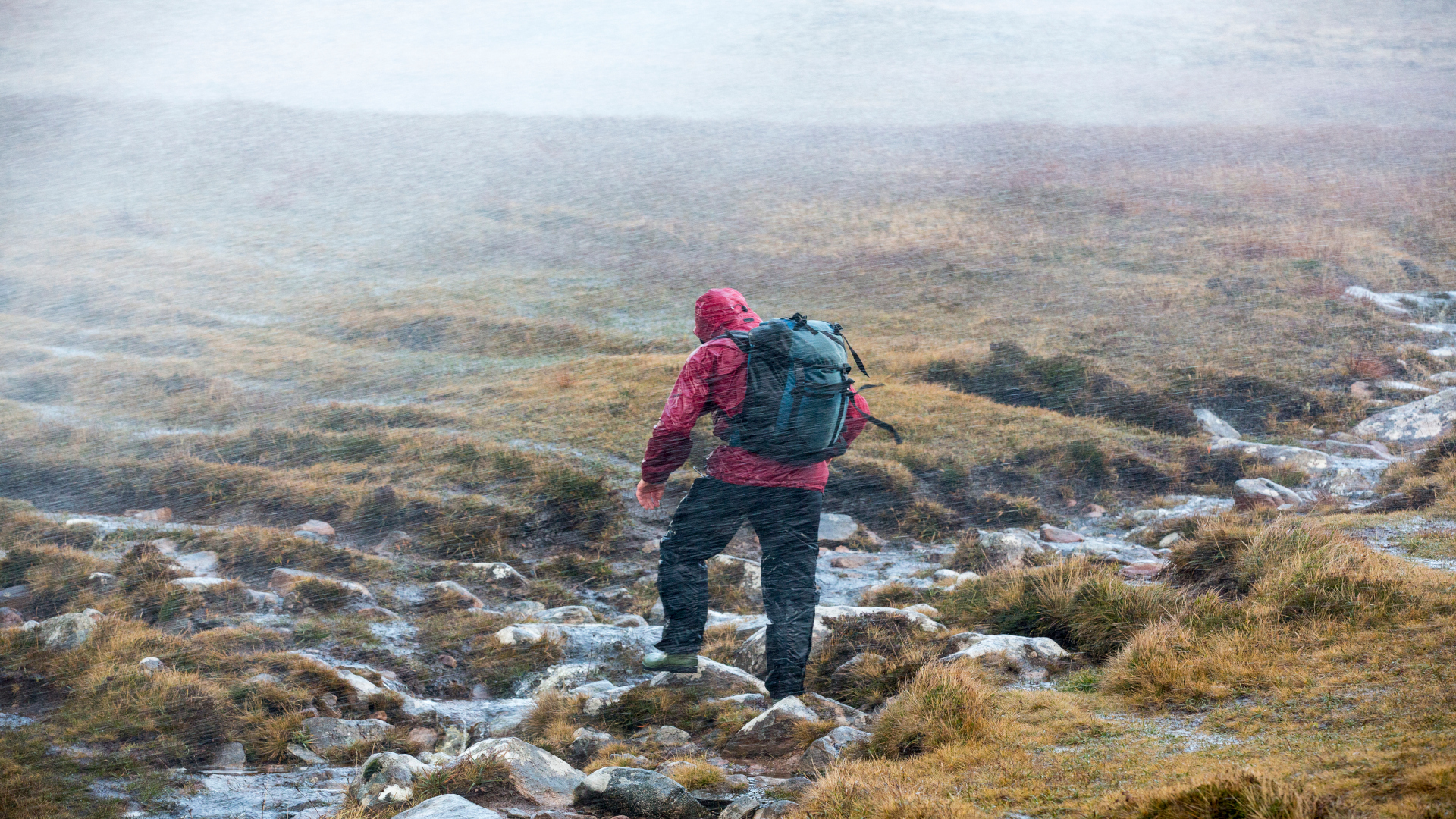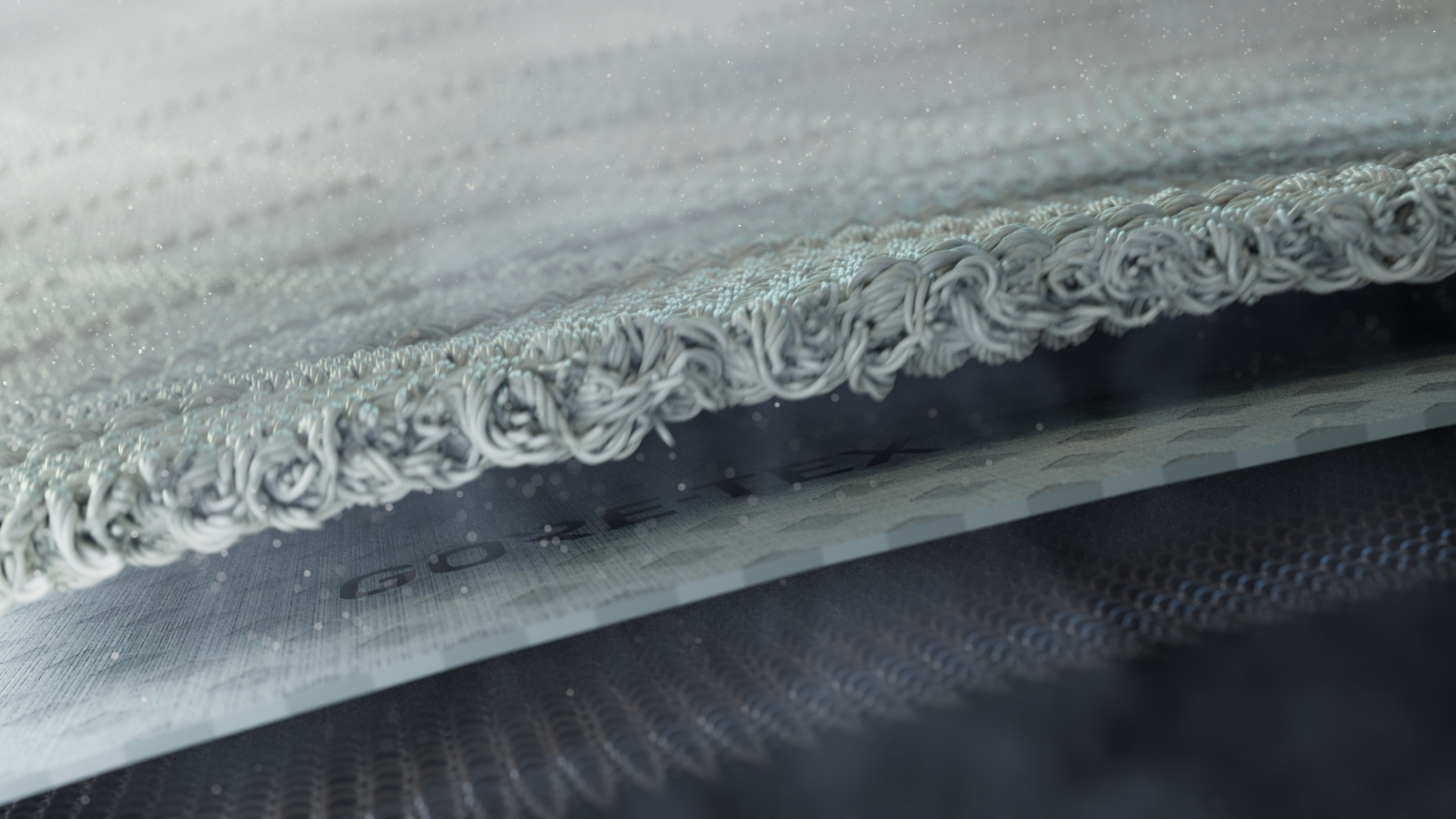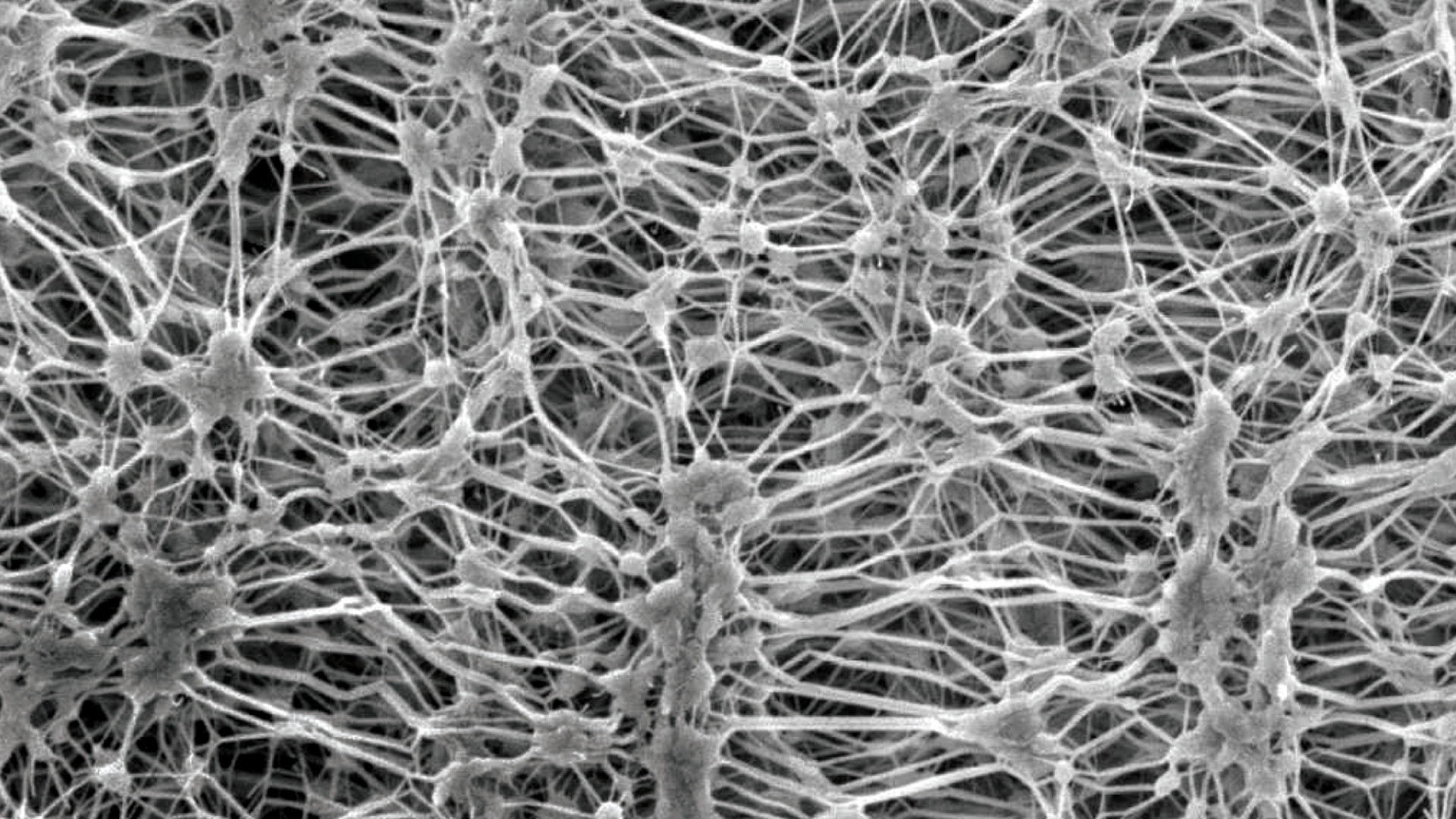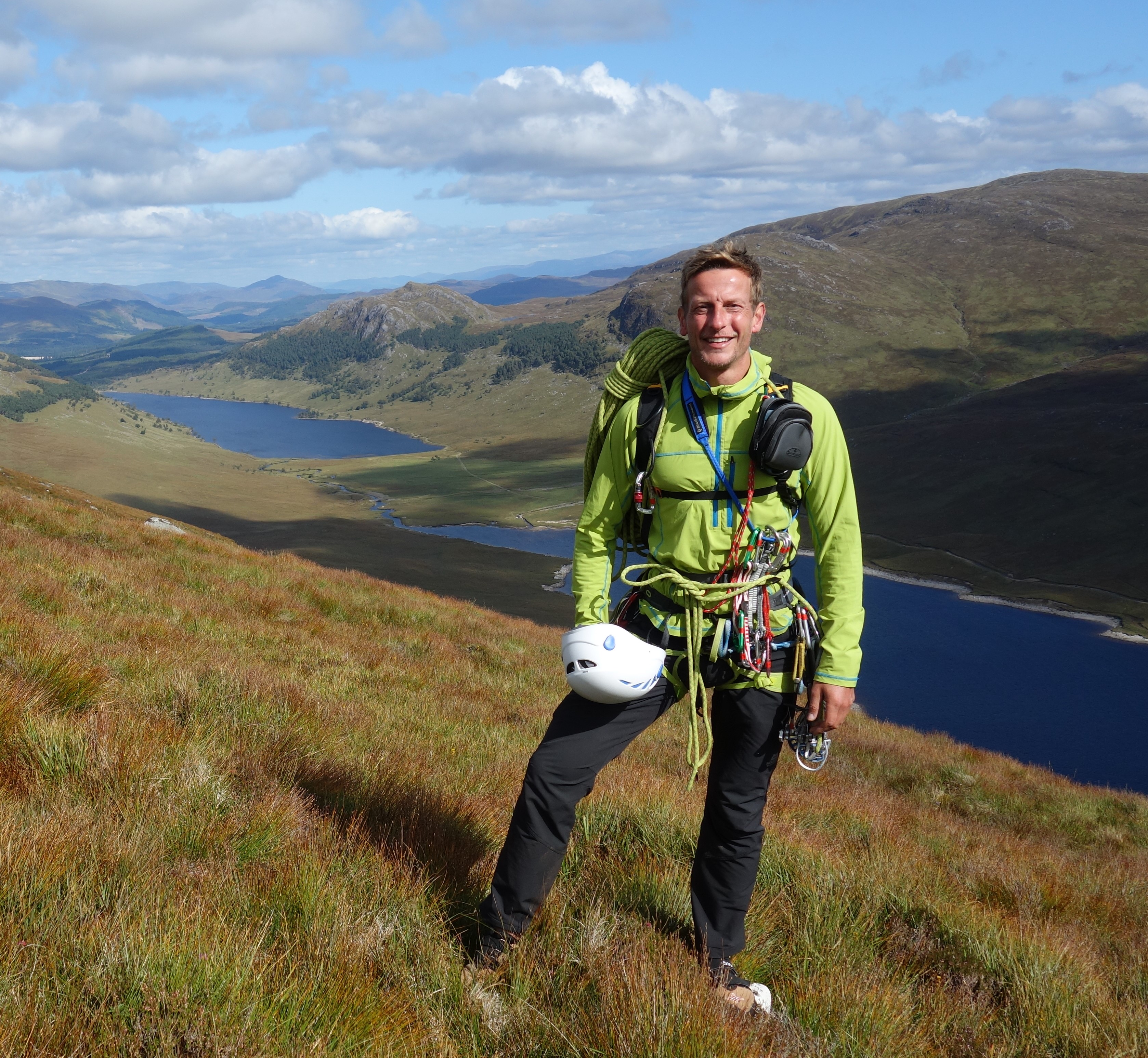Breathability ratings explained
Breathability ratings are a key metric to consider in your pursuit of the perfect waterproof garments. In this post, we explain how they work

When you’re trying to buy hiking gear, it can sometimes be a little bit tricky to get past all the science-speak and techy terms used by brands to talk up their products’ benefits. One such term is “breathability”. While most of us have a good idea of what breathability means and know that it’s something we’d ideally like to have, not so many of us know how it’s achieved, how breathability ratings are measured, or how all those numbers translate into performance in the field.
In this article, we aim to do a little jargon-busting with a simple, straight-talking explanation of how breathability works in layman’s terms. We also delve into why it’s such an important feature to consider when buying any kind of wet-weather gear, whether it be the best waterproof jackets, best waterproof pants, or even the best hiking boots.
What is “breathability”?
Breathability, in a few words, refers to how well (or poorly) a fabric allows your sweat (or, in technical parlance “moisture vapor”) and body heat to pass through it from inside to out.
Why breathability is important
One of the reasons breathability is such a critical feature in outdoor garments – and particularly in waterproof jackets – is that without it, simply put, we’d all be walking around soaked in sweat. As we all know, when we exercise, our bodies generate heat and moisture. When we’re hiking in the rain, if that heat and moisture can’t escape our waterproof layers, then we’re sure to soon become as drenched in our own perspiration as we might have otherwise been by rainwater if we’d forgone our shell layer altogether.
While being wet isn’t a big issue in and of itself, the problem lies in the fact that sweat-soaked garments are ones that cannot breathe well enough to shift subsequent sweat because the original load is blocking the way out. Not only does this make things severely icky and uncomfortable, it can also be a serious health hazard. Water conducts heat away from the body around 25 times faster than air, so if we allow our sweat to cool down – as is likely to happen on descents, if temperatures drop, or if we have to stop for any reason – then it could set us up for a serious dose of the chills or even a bout of hypothermia.
Think of it this way – if warmth and protection from the elements were our only concerns, we’d all be doing our hiking in huge parka jackets topped off with a coating of shrink wrap or dressed in the heavy-duty PVC jackets favored by seafarers and fishermen. Sadly – for our wallets, at least – staying dry while hiking and catering for our body’s needs requires a little more nuance and a jacket that’s capable of blocking external H2O whilst simultaneously shifting the internal kind from inside to out.

Breathability ratings in waterproof outerwear
The breathability of waterproof garments is determined by a combination of factors, including the type of fabric, its density, and the amount of insulation the garment uses. The most significant determinant, however, is the membrane sandwiched between the jacket’s face (outer) fabric and lining.
Advnture Newsletter
All the latest inspiration, tips and guides to help you plan your next Advnture!

Waterproof-breathable membranes are incredibly thin films, coatings, or sheets of material that have, quite literally, billions of microscopic pores that are too small for rainwater to penetrate but large enough to allow water vapor molecules to escape outward. This technical wizardry is what gives our wet-weather togs the ability to simultaneously fend off airborne liquid (see What is hydrostatic head?) while also conveying the kind produced by our bodies to the fabric’s exterior to evaporate.
Once the membrane is added to the garment, the fabric’s degree of breathability is then quantified using one of two methods: the Moisture Vapor Transmission Rate (MVTR) or the Resistance to Evaporative Heat Loss (RET).
Two types of breathability ratings: MVTR & RET
Moisture vapor transmission rate (MVTR)
The MVRT of any fabric is gauged by measuring the quantity of water vapor that seeps through it over a 24-hour period in laboratory tests. This is typically shown in product specifications as “g/m²/day” or “g/m²/24h”. The higher the figure attached to the fabric, the more breathable it is – i.e., 10,000 g/m²/24 means that 10,000 grams of water passed through one square meter of fabric over the course of a day, whereas 20,000 g/m²/24 means twice as much water passed through.
But how does that help you choose a waterproof jacket?
For a better idea of how different breathability ratings translate into performance in the field, take a look at the following:
5,000-10,000 g/m2/day – Jackets with MVTR breathability ratings in this range are suitable for low-output activities and general outdoor use but not breathable enough for more aerobic activities like trail running or more intense hiking.
10,000-15,000 g/m2/day – Ideal for more active use in high-output activities, including hiking, ski touring, and mountaineering.
20,000+ g/m2/day – The best bet for use in warmer climates or for more intense aerobic activities like trail running or ski-mountaineering.
Resistance to evaporative heat loss (RET)
The other breathability ratings system you may come across is the Resistance to Evaporative Heat Loss (RET). With this method, which is calculated in laboratory using sweating manikins, a lower number indicates superior breathability, with zero bring the best score. So, in terms of how that translates into performance levels for outdoor garments such as jackets, RET ratings work roughly as follows:
13–20 – Suitable for general outdoor use.
6–13 – A safer bet for more active, high-output pursuits.
0–6 – Designed for highly aerobic activities.
The main take-home from these breathability ratings is that, when buying a waterproof jacket (or waterproof pants), you should look for one that is suited for your intended use – the more intense the activity you plan on doing, the more breathability you will need to regulate body heat and stay sweat-free.

Former Advnture editor Kieran is a climber, mountaineer, and author who divides his time between the Italian Alps, the US, and his native Scotland.
He has climbed a handful of 6000ers in the Himalayas, 4000ers in the Alps, 14ers in the US, and loves nothing more than a good long-distance wander in the wilderness. He climbs when he should be writing, writes when he should be sleeping, has fun always.
Kieran is the author of 'Climbing the Walls', an exploration of the mental health benefits of climbing, mountaineering, and the great outdoors.

